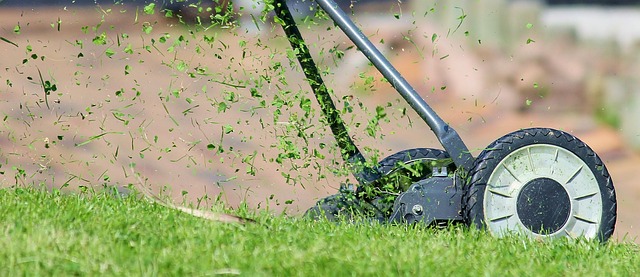Spring Tree Services: Trimming, Removal & Cost Guide
As spring arrives, trees require specialized care to thrive throughout the growing season. Understanding the range of tree services available, from routine trimming to complete removal, helps property owners make informed decisions about maintaining their landscape. This guide explores essential tree care options, cost considerations, and practical strategies for selecting qualified professionals while managing your budget effectively.

Affordable Spring Tree Services: Trimming & Removal Guide
Spring represents an ideal time for tree maintenance, as many species benefit from pruning before new growth accelerates. Tree trimming services typically involve removing dead or damaged branches, shaping the canopy for aesthetic appeal, and eliminating potential hazards. Professional arborists assess each tree’s specific needs, considering factors like species, age, health status, and proximity to structures. Removal services become necessary when trees are diseased beyond recovery, pose safety risks, or interfere with construction projects. Spring scheduling often provides availability advantages, as demand peaks during storm seasons and late fall.
Understanding Spring Tree Trimming Costs & Service Factors
Several variables influence tree service pricing, making each project unique. Tree height stands as the primary cost driver, with services for trees under 30 feet typically ranging from $75 to $400, while trees exceeding 60 feet may cost $800 to $1,500 or more for trimming. Tree diameter, branch density, and accessibility significantly impact labor requirements and equipment needs. Location matters considerably—trees near power lines, buildings, or in tight spaces require specialized techniques and additional safety measures, increasing costs. The tree’s health condition also affects pricing, as diseased or infested trees demand extra precautions during handling and disposal. Emergency services, typically needed after storms, command premium rates due to urgent response requirements. Geographic region influences pricing structures, with urban areas generally showing higher rates than rural locations due to operational costs and demand levels.
Choosing Tree Services: Credentials, Quotes & Safety Tips
Selecting qualified tree service providers requires careful evaluation of credentials and business practices. Verify that companies carry comprehensive liability insurance and workers’ compensation coverage to protect your property and avoid liability for injuries. Certification from organizations like the International Society of Arboriculture (ISA) indicates professional training and adherence to industry standards. Request multiple detailed quotes that itemize services, specifying which trees receive attention and what work will be performed. Reputable companies conduct on-site assessments rather than providing estimates over the phone. Safety practices serve as critical evaluation criteria—professionals should use proper equipment, follow ANSI A300 standards, and never use climbing spikes on trees being pruned for health (spikes damage living tissue). Ask about disposal methods, cleanup procedures, and whether stump grinding is included or costs extra. Check references and online reviews, paying attention to comments about punctuality, professionalism, and property respect.
Smart Strategies to Save on Spring Tree Services
Budget-conscious property owners can reduce tree care expenses without compromising quality or safety. Scheduling services during off-peak periods, typically late winter through early spring, often yields lower rates as companies seek to maintain steady work. Bundling multiple services—such as trimming several trees simultaneously or combining trimming with stump removal—frequently results in package discounts. Some providers offer reduced rates for allowing them to leave wood chips on-site rather than hauling debris away, providing you with free mulch material. Obtaining quotes from multiple licensed providers creates competitive pricing opportunities. Consider joining neighborhood groups to negotiate collective service rates when multiple properties need work. Regular maintenance prevents costly emergency interventions, making routine care more economical long-term than reactive crisis management.
| Service Provider | Services Offered | Typical Cost Range |
|---|---|---|
| Davey Tree Expert Company | Trimming, removal, stump grinding, emergency services | $300 - $2,000+ per project |
| Bartlett Tree Experts | Pruning, cabling, bracing, disease management | $250 - $1,800+ per project |
| SavATree | Trimming, removal, plant healthcare, fertilization | $200 - $1,500+ per project |
| Local Independent Arborists | Trimming, removal, consultation, routine maintenance | $150 - $1,200+ per project |
| The Care of Trees | Comprehensive tree care, preservation, risk assessment | $275 - $2,200+ per project |
Prices, rates, or cost estimates mentioned in this article are based on the latest available information but may change over time. Independent research is advised before making financial decisions.
Benefits of Regular Tree Maintenance & Financing Options
Consistent tree care delivers multiple advantages beyond aesthetic appeal. Regular pruning promotes healthy growth patterns, reduces disease susceptibility, and extends tree lifespan significantly. Removing dead or weak branches prevents property damage during storms and reduces liability risks. Well-maintained trees increase property values, with mature, healthy specimens adding substantial curb appeal and potentially boosting home sale prices by thousands of dollars. Strategic trimming improves sunlight penetration to lawns and gardens while maintaining privacy screening where desired. For substantial tree work requiring significant investment, various financing options exist. Some tree service companies offer payment plans spreading costs across several months. Home equity lines of credit provide funds for major landscape projects at relatively low interest rates. Personal loans through banks or credit unions offer another avenue for financing tree removal or extensive pruning projects. Additionally, some situations qualify for insurance coverage—storm damage removal often falls under homeowner policies, though deductibles apply.
Tree service investments protect both property and safety while preserving the natural beauty that mature trees provide. By understanding cost factors, selecting qualified professionals, and exploring strategic savings approaches, property owners can maintain healthy landscapes without excessive financial burden. Spring presents an opportune moment to assess tree health, schedule necessary maintenance, and establish ongoing care relationships with trusted arborists who understand local species and climate conditions.




